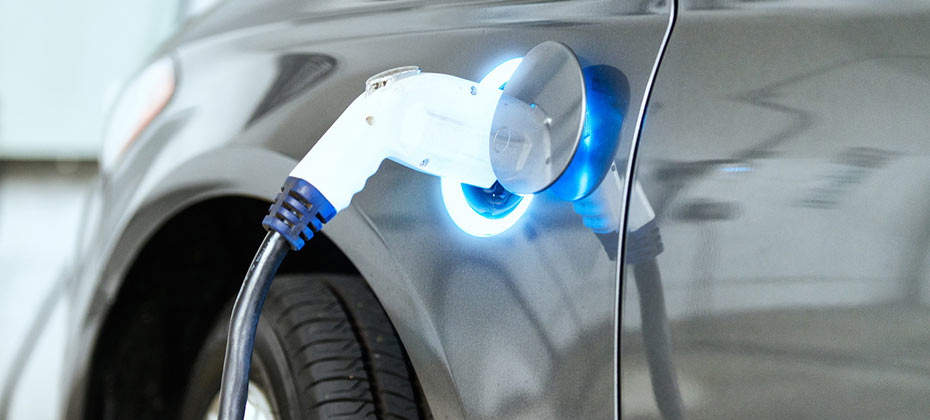All posts by Guest Contributor

Leveraging data to eliminate wasted ad spend will set your dealership up for success in the new year.

Intuitively we all know that people with higher credit risk scores tend to get more favorable loan terms. Since a higher credit risk score corresponds to lower chance of delinquency, a lender can grant: a higher credit line, a more favorable APR or a mix of those and other loan terms. Some people might wonder if there is a way to quantify the relationship between a credit risk score and the loan terms in a more mathematically rigorous way. For example, what is an appropriate credit limit for a given score band? Early in my career I worked a lot with mathematical optimization. This optimization used a software product called Marketswitch (later purchased by Experian). One caveat of optimization is in order to choose an optimal decision you must first simulate all possible decisions. Basically, one decision cannot be deemed better than another if the consequences of those decisions are unknown. So how does this relate to credit risk scores? Credit scores are designed to give lenders an overall view of a borrower’s credit worthiness. For example, a generic risk score might be calibrated to perform across: personal loans, credit cards, auto loans, real estate, etc. Per lending category, the developer of the credit risk score will provide an “odds chart;” that is, how many good outcomes can you expect per bad outcome. Here is an odds chart for VantageScore® 3 (overall - demi-decile). Score Range How Many Goods for 1 Bad 823-850 932.3 815-823 609.0 808-815 487.6 799-808 386.1 789-799 272.5 777-789 228.1 763-777 156.1 750-763 115.6 737-750 85.5 723-737 60.3 709-723 45.1 693-709 33.0 678-693 24.3 662-678 18.3 648-662 14.1 631-648 10.8 608-631 7.9 581-608 5.5 542-581 3.5 300-542 1.5 Per the above chart, there will be 932.3 good accounts for every one “bad” (delinquent) account in the score range of 823-850. Now, it’s a simple calculation to turn that into a bad rate (i.e. what percentage of accounts in this band will go bad). So, if there are 932.3 good accounts for every one bad account, we have (1 expected bad)/(1 expected bad + 932.3 expected good accounts) = 1/(1+932.3) = 0.1071%. So, in the credit risk band of 823-850 an account has a 0.1071% chance of going bad. It’s very simple to apply the same formula to the other risk bands as seen in the table below. Score Range How Many Goods for 1 Bad Bad Rate 823-850 932.3 0.1071% 815-823 609.0 0.1639% 808-815 487.6 0.2047% 799-808 386.1 0.2583% 789-799 272.5 0.3656% 777-789 228.1 0.4365% 763-777 156.1 0.6365% 750-763 115.6 0.8576% 737-750 85.5 1.1561% 723-737 60.3 1.6313% 709-723 45.1 2.1692% 693-709 33.0 2.9412% 678-693 24.3 3.9526% 662-678 18.3 5.1813% 648-662 14.1 6.6225% 631-648 10.8 8.4746% 608-631 7.9 11.2360% 581-608 5.5 15.3846% 542-581 3.5 22.2222% 300-542 1.5 40.0000% Now that we have a bad percentage per risk score band, we can define dollars at risk per risk score band as: bad rate * loan amount = dollars at risk. For example, if the loan amount in the 823-850 band is set as $10,000 you would have 0.1071% * $10,000 = $10.71 at risk from a probability standpoint. So, to have constant dollars at risk, set credit limits per band so that in all cases there is $10.71 at risk per band as indicated below. Score Range How Many Goods for 1 Bad Bad Rate Loan Amount $ at Risk 823-850 932.3 0.1071% $ 10,000.00 $ 10.71 815-823 609.0 0.1639% $ 6,535.95 $ 10.71 808-815 487.6 0.2047% $ 5,235.19 $ 10.71 799-808 386.1 0.2583% $ 4,147.65 $ 10.71 789-799 272.5 0.3656% $ 2,930.46 $ 10.71 777-789 228.1 0.4365% $ 2,454.73 $ 10.71 763-777 156.1 0.6365% $ 1,683.27 $ 10.71 750-763 115.6 0.8576% $ 1,249.33 $ 10.71 737-750 85.5 1.1561% $ 926.82 $ 10.71 723-737 60.3 1.6313% $ 656.81 $ 10.71 709-723 45.1 2.1692% $ 493.95 $ 10.71 693-709 33.0 2.9412% $ 364.30 $ 10.71 678-693 24.3 3.9526% $ 271.08 $ 10.71 662-678 18.3 5.1813% $ 206.79 $ 10.71 648-662 14.1 6.6225% $ 161.79 $ 10.71 631-648 10.8 8.4746% $ 126.43 $ 10.71 608-631 7.9 11.2360% $ 95.36 $ 10.71 581-608 5.5 15.3846% $ 69.65 $ 10.71 542-581 3.5 22.2222% $ 48.22 $ 10.71 300-542 1.5 40.0000% $ 26.79 $ 10.71 In this manner, the output is now set credit limits per band so that we have achieved constant dollars at risk across bands. Now in practice it’s unlikely that a lender will grant $1,683.27 for the 763 to 777 credit score band but this exercise illustrates how the numbers are generated. More likely, a lender will use steps of $100 or something similar to make the credit limits seem more logical to borrowers. What I like about this constant dollars at risk approach is that we aren’t really favoring any particular credit score band. Credit limits are simply set in a manner that sets dollars at risk consistently across bands. One final thought on this: Actual observations of delinquencies (not just predicted by the scores odds table) could be gathered and used to generate a new odds tables per score band. From there, the new delinquency rate could be generated based on actuals. Though, if this is done, the duration of the sample must be long enough and comprehensive enough to include both good and bad observations so that the delinquency calculation is robust as small changes in observations can affect the final results. Since the real world does not always meet our expectations, it might also be necessary to “smooth” the odds-chart so that its looks appropriate.

Enterprise Security Magazine recently named Experian a Top 10 Fraud and Breach Protection Solutions Provider for 2020. Accelerating trends in the digital economy--stemming from stay-at-home orders and rapid increases in e-commerce and government funding--have created an attractive environment for fraudsters. At the same time, there’s been an uptick in the amount of personally identifiable information (PII) available on the dark web. This combination makes innovative fraud and breach solutions more crucial than ever. Enterprise Security Magazine met with Kathleen Peters, Experian’s Chief Innovation Officer, and Michael Bruemmer, Vice President of Global Data Breach and Consumer Protection, to discuss COVID-19 digital trends, the need for robust fraud protection, and how Experian’s end-to-end breach protection services help businesses protect consumers from fraud. According to the magazine, “With Experian’s best in class analytics, clients can rapidly respond to ever-changing environments by utilizing offerings such as CrossCore® and Sure ProfileTM to identify and prevent fraud.” In addition to our commitment to develop new products to combat the rising threat of fraud, Experian is focused on helping businesses minimize the consequences of a data breach. The magazine noted that, “To serve as a one-stop-shop for data breach protection, Experian offers a wide range of auxiliary services such as incident management, data breach notification, identity protection, and call center support.” We are continuously working to create and integrate innovative and robust solutions to prevent and manage different types of data breaches and fraud. Read the full article Contact us

The shift created by the COVID-19 pandemic is still being realized. One thing that we know for sure is that North American consumers’ expectations continue to rise, with a focus on online security and their digital experience. In mid-September of this year, Experian surveyed 3,000 consumers and 900 businesses worldwide—with 300 consumers and 90 businesses in the U.S.—to explore the shifts in consumer behavior and business strategy pre- and post-COVID-19. More than half of consumers surveyed continue to expect more security steps when online, including more visible security measures in place on websites and more knowledge about how their data is being protected and stored. However, those same consumers aren’t willing to wait more than 60 seconds to complete an online transaction making it more important than ever to align your security and experience strategies. While U.S. consumers are optimistic about the economy’s recovery, they are still dealing with financial challenges and their behaviors have changed. Future business plans should take into account consumers’: High expectations of their online experience Increases in online spending Difficulty paying bills Reduction in discretionary spending Moving forward, businesses are focusing on use of AI, online security, and digital engagement. They are emphasizing revenue generation while looking into the future of online security. Nearly 70% of businesses also plan to increase their fraud management budgets in the next 6 months. Download the full North America Insights Report to get all of the insights into North American business and consumer needs and priorities and keep visiting the Insights blog in the coming weeks for a look at how trends have changed from early in the pandemic. North America Insights Report Global Insights Report

No one can deny that the mortgage and real estate industries have been uniquely affected by COVID-19. Social distancing mandates have hindered open house formats and schedules. Meanwhile, historically low-interest rates, pent-up demand and low housing inventory created a frenzied sellers’ market with multiple offers, usually over-asking. Added to this are the increased scrutiny of how much borrowers will qualify and get approved for with tightened investor guidelines, and the need to verify continued employment to ensure a buyer maintains qualifying status through closing. As someone who’s spent more than 15 years in the industry and worked on all sides of the transaction (as a realtor and for direct lenders), I’ve lived through the efforts to revamp and digitize the process. However, it wasn’t until recently that I purchased my first home and experienced the mortgage process as a consumer. And it was clear that, for most lenders, the pandemic has only served to shine a light on a still somewhat fragmented mortgage process and clunky consumer experience. Here are three key components missing from a truly modernized mortgage experience: Operational efficiency Knowing that the industry had made moves toward a digital mortgage process, I hoped for a more streamlined and seamless flow of documents, loan deliverables and communication with the lender. However, the process I experienced was more manual than expected and disjointed at times. Looking at a purchase transaction from end to end, there are at least nine parties involved: buyer, seller, realtors, lender, home inspectors/inspection vendors, appraiser, escrow company and notary. With all those touchpoints in play, it takes a concerted effort between all parties and no unforeseen issues for a loan to be originated faster than 30 days. Meanwhile, the opposite has been happening, with the average time to close a loan increasing to 49 days since the beginning of the pandemic, per Ellie Mae’s Origination Insights Report. Faster access to fresher data can reduce the time to originate a mortgage. This saves resource hours for the lender, which equates to savings that can ultimately be passed down to the borrower. Digital adoption There are parts of the mortgage process that have been digitized, yes. However, the mortgage process still has points void of digital connectivity for it to truly be called an end-to-end digital process. The borrower is still required to track down various documents from different sources and the paperwork process still feels very “manual.” Printing, signing and scanning documents back to the lender to underwrite the loan add to the manual nature of the process. Unless the borrower always has all documents digitally organized, requirements like obtaining your W-2’s and paystubs, and continuously providing bank and brokerage statements to the lender, make for an awkward process. Modernizing the mortgage end-to-end with the right kind of data and technology reduces the number of manual processes and translates into lower costs to produce a mortgage. Turn times are being pushed out when the opposite could be happening. A streamlined, modernized approach between the lender and consumer not only saves time and money for both parties, it ultimately enables the lender to add value by providing a better consumer experience. Transparency Digital adoption and better digital end-to-end process are not the only keys to a better consumer experience; transparency is another integral part of modernizing the mortgage process. More transparency for the borrower starts with a true understanding of the amount for which one can qualify. This means when the loan is in underwriting, there needs to be a better understanding of the loan status and the ability to better anticipate and be proactive about loan conditions. Additionally, the lender can profit from gaining more transparency and visibility into a borrower’s income streams and assets for a more efficient and holistic picture of their ability to pay upfront. This allows for a more streamlined process and enables the lender to close efficiently without sacrificing quality underwriting. A multitude of factors have come into play since the beginning of the pandemic – social distancing mandates have led to breakdowns in a traditionally face-to-face process of obtaining a mortgage, highlighting areas for improvement. Can it be done faster, more seamlessly? Absolutely. In ideal situations, mortgage originators can consistently close in 30 days or less. Creating operational efficiencies through faster, fresher data can be the key for a lender to more accurately assess a borrower’s ability to pay upfront. At the same time, a digital-first approach enhances the consumer experience so they can have a frictionless, transparent mortgage process. With technology, better data, and the right kind of innovation, there can be a truly end-to-end digital process and a more informed consumer. Learn more

In late September, California announced a new requirement for the sale of all new passenger vehicles to be zero-emission by 2035. While that’s still 15 years away, the executive order created quite a buzz in the automotive industry, reigniting conversations about electric vehicles (EVs) and the current market penetration of the most common zero-emission vehicles. With that in mind, we wanted to take a closer look at the state of EVs—across the country and more specifically, in California—to better understand the EV market and how it’s grown over the past few years. As of Q2 2020, electric vehicles comprised just 0.312% of vehicles in operation (VIO). While EV market share seems small, there has been significant growth since Q2 2015, when they only held 0.0678% of the VIO market—meaning the growth of EVs has more than tripled (3.6x) in the last five years. But even still, other segments, such as CUVs have seen faster growth in the same time period (10% market share in Q2 2020 compared to 6.2% in Q2 2015). California sees faster EV adoption California has seen growth in EV adoption in the last decade, but it has grown exponentially in the last five years. EVs comprised 1.79% of new vehicle registrations 2015, and the percentage grew to 5.32% as of Q2 2020. Much of the growth occurred between 2017 and 2018, when market share jumped from 2.62% to 5.04% year-over-year, with the introduction of the more cost-effective Tesla Model 3. Even with that growth, California new vehicle purchases have a long way to grow to move up to 100% EV. With the popularity of the Model 3, it’s somewhat unsurprising, Tesla holds the lion’s share of the EV market in California, making up 61.9% of EVs on the road within VIO, and nationally at 64.8% share. That could potentially change down the road though. Over the next two years, numerous manufacturers have plans to introduce electric versions of popular models or introduce new EV models altogether. This not only creates competition but could also help continue to drive down vehicle cost, making EVs a more viable option for consumers. Examining costs and other factors Cost is one of the key considerations that industry experts have routinely brought up over the years as a barrier to EV adoption. While some say that maintenance and fuel are cheaper in the long run, purchasing an EV today is typically a more expensive option at the dealership. The average loan amount for an EV in California in 2019 was $40,964, compared to an average vehicle loan amount of $32,373. That said, as EV adoption has seen exponential growth in the last five years, the average price has reduced. The average loan amount for an EV in 2016 was $78,646, dropping more than $35,000 in just five years as the technology continued to mature and vehicle costs lowered. Additionally, tax incentives, particularly in California, have also helped reduce affordability concerns. Though today’s tax incentives may not be in place through 2035, California will likely need to evaluate if economic incentives are required along the way to achieving the zero-emission vehicle deadline. However, even as costs lower, there are additional challenges to be overcome. For instance, infrastructure continues to be a barrier to adoption. In a 2019 AAA study, concern over being able to find a place to charge is the top reason listed as to why respondents are unlikely to purchase an EV in the future. In addition, according to Statisa, in March 2020, the U.S. had almost 25,000 charging stations for plug-in electric vehicles, and approximately 78,500 charging outlets. Of those charging stations, nearly 30% are in California. But with continued growth of EV sales, there will be a critical need for continued infrastructure nationwide—not just in California. In addition to these considerations, many impacts of the new mandate remain unknown. California will have to navigate increased electricity demand—especially during peak hours—and increases in battery scrappage, as EVs wear out. Gas stations will need to manage a loss of revenue, while changes in fuel taxes are likely, and vehicle technicians will require new training. If increased adoption of zero emission vehicles is California’s long-term goal, this could also impact the popularity of used vehicles, which could leave dealers looking for alternative locations to sell their gasoline-powered inventory. Looking toward the future of EVs Realistically, with 15 years until the mandate takes effect, the California mandate won’t have much of an immediate effect on the industry. But it does highlight key considerations for automakers and the aftermarket moving forward. To achieve better adoption rates, automakers need to understand the barriers to success and how they impact consumer behavior. An example of this is how California has seen higher EV adoption rates as the availability of plug-in stations has increased. Continuing to find ways to lower costs and focusing on savings over the lifetime of the vehicle is will help consumers see the value of an EV. At the end of the day, automakers play a large role in moving the country toward EV adoption, so having a clear understanding of the trends can help refine strategies as we move toward an electrified future.

While the automotive industry initially took a hit at the onset of COVID-19, things are beginning to rebound. New vehicle registrations are still down compared to 2019, however, the year-over-year comparisons by month are starting to level out. And, while most of the attention has been paid to new registration figures, we can’t lose sight of the vehicles on the road. Some consumers acted to take advantage of automaker incentives and low interest rates, and others purchased due to newfound needs, but the vast majority have stuck with their current vehicle. That means, despite some bumps over the past few months, opportunity for the aftermarket and dealer service departments to thrive by keeping these vehicles on the road still exists. It starts with understanding what’s on the road. Insight into these vehicles will better position aftermarket suppliers and repairs shops to perform scheduled maintenance and address the needs of drivers. According to Experian’s Q2 2020 Market Trends Review, there were 280.6 million vehicles in operation, up from 278.1 million a year ago. Of those vehicles on the road, light-duty trucks accounted for 56.5%, and passenger cars made up the remaining 43.5%. So, there’s little surprise that the top three segments on the road were full-sized pick-ups (16%), CUVs (10%) and mid-range cars (9.9%). And if we break it down even further, the top three brands were Ford (15.5%), Chevrolet (14.3%) and Toyota (12.1%). But we understand that not all 280.6 million vehicles will need aftermarket parts or service; it’s important for the industry to keep a close eye on the aftermarket “sweet spot”—those vehicles that are six- to 12-years old. Identifying these vehicles and anticipating their maintenance needs will help aftermarket suppliers navigate the recovery. In Q2 2020, 31.2% (87.6 million) of vehicles in operation fell within the “sweet spot”—with a mix nearly 46% domestic and 54% import brands. And while the opportunity today is significant, we expect the “sweet spot” to continue to grow for at least the next four years. To make the most of the opportunity, aftermarket suppliers need to understand where these vehicles are located, what types of vehicles fall within the sweet spot and the most common parts that are used. COVID-19 has shifted the industry for all parties involved. Some consumers may opt to hold onto their vehicles a little bit longer rather than purchase a vehicle; only time will tell. In any event, the more aftermarket suppliers and repair shops understand about the vehicles on the road, the better positioned they will be to address the needs of consumers and grow business. To view Experian’s full Q2 2020 Market Trends Review, click here.

Synthetic identity fraud, otherwise known as SID fraud, is reportedly the fastest-growing type of financial crime. One reason for its rapid growth is the fact that it’s so hard to detect, and thus prevent. This allows the SIDs to embed within business portfolios, building up lines of credit to run up charges or take large loans before “busting out” or disappearing with the funds. In Experian’s recent perspective paper, Preventing synthetic identity fraud, we explore how SID differs from other types of fraud, and the unique steps required to prevent it. The paper also examines the financial risks of SID, including: $15,000 is the average charge-off balance per SID attack Up to 15% of credit card losses are due to SID 18% - the increase in global card losses every year since 2013 SID is unlike any other type of fraud and standard fraud protection isn’t sufficient. Download the paper to learn more about Experian’s new toolset in the fight against SID. Download the paper

The CU Times recently reported on a nationwide synthetic identity fraud ring impacting several major credit unions and banks. Investigators for the Federal and New York governments charged 13 people and three businesses in connection to the nationwide scheme. The members of the crime ring were able to fraudulently obtain more than $1 million in loans and credit cards from 10 credit unions and nine banks. Synthetic Identity Fraud Can’t Be Ignored Fraud was on an upward trend before the pandemic and does not show signs of slowing. Opportunistic criminals have taken advantage of the shift to digital interactions, loosening of some controls in online transactions, and the desire of financial institutions to maintain their portfolios – seeking new ways to perpetrate fraud. At the onset of the COVID-19 pandemic, many financial institutions shifted their attention from existing plans for the year. In some cases they deprioritized plans to review and revise their fraud prevention strategy. Over the last several months, the focus swung to moving processes online, maintaining portfolios, easing customer friction, and dealing with IT resource constraints. While these shifts made sense due to rapidly changing conditions, they may have created a more enticing environment for fraudsters. This recent synthetic identity fraud ring was in place long before COVID-19. That said, it still highlights the need to have a prevention and detection plan in place. Financial institutions want to maintain their portfolios and their customer or member experience. However, they can’t afford to table fraud plans in the meantime. “72% of FI executives surveyed believe synthetic identity fraud to be more challenging than identity theft. This is due to the fact that it is harder to detect—either crime rings nurture accounts for months or years before busting out with six-figure losses, or they are misconstrued as credit losses, and valuable agent time is spent trying to collect from someone who doesn’t exist,” says Julie Conroy, Research Director at Aite Group. Prevention and Detection Putting the fraud strategy discussion on hold—even in the short term—could open up a financial institution to potential risk at time when cost control and portfolio maintenance are watch words. Canny fraudsters are on the lookout for financial institutions with fewer protections. Waiting to implement or update a fraud strategy could open a business up to increased fraud losses. Now is the time to review your synthetic identity fraud prevention and detection strategies, and Experian can help. Our innovative new tool in the fight against synthetic identity fraud helps financial institutions stop fraudsters at the door. Learn more

Staying ahead of the trends and adjusting will support sales growth, while also supporting consumers as they begin to recover from the impact of COVID-19.

Changing consumer behaviors caused by the COVID-19 pandemic have made it difficult for businesses to make good lending decisions. Maintaining a consistent lending portfolio and differentiating good customers who are facing financial struggles from bad actors with criminal intent is getting more difficult, highlighting the need for effective decisioning tools. As part of our ongoing Q&A perspective series, Jim Bander, Experian’s Market Lead, Analytics and Optimization, discusses the importance of automated decisions in today’s uncertain lending environment. Check out what he had to say: Q: What trends and challenges have emerged in the decisioning space since March? JB: In the age of COVID-19, many businesses are facing several challenges simultaneously. First, customers have moved online, and there is a critical need to provide a seamless digital-first experience. Second, there are operational challenges as employees have moved to work from home; IT departments in particular have to place increase priority on agility, security, and cost-control. Note that all of these priorities are well-served by a cloud-first approach to decisioning. Third, the pandemic has led to changes in customer behavior and credit reporting practices. Q: Are automated decisioning tools still effective, given the changes in consumer behaviors and spending? JB: Many businesses are finding automated decisioning tools more important than ever. For example, there are up-sell and cross-sell opportunities when an at-home bank employee speaks with a customer over the phone that simply were not happening in the branch environment. Automated prequalification and instant credit decisions empower these employees to meet consumer needs. Some financial institutions are ready to attract new customers but they have tight marketing budgets. They can make the most of their budget by combining predictive models with automated prescreen decisioning to provide the right customers with the right offers. And, of course, decisioning is a key part of a debt management strategy. As consumers show signs of distress and become delinquent on some of their accounts, lenders need data-driven decisioning systems to treat those customers fairly and effectively. Q: How does automated decisioning differentiate customers who may have missed a payment due to COVID-19 from those with a history of missed payments? JB: Using a variety of credit attributes in an automated decision is the key to understanding a consumer’s financial situation. We have been helping businesses understand that during a downturn, it is important for a decisioning system to look at a consumer through several different lenses to identify financially stressed consumers with early-warning indicators, respond quickly to change, predict future customer behavior, and deliver the best treatment at the right time based on customer specific situations or behaviors. In addition to traditional credit attributes that reflect a consumer’s credit behavior at a single point in time, trended attributes can highlight changes in a consumer’s behavior. Furthermore, Experian was the first lender to release new attributes specifically created to address new challenges that have arisen since the onset of COVID. These attributes help lenders gain a broader view of each consumer in the current environment to better support them. For example, lenders can use decisioning to proactively identify consumers who may need assistance. Q: What should financial institutions do next? JB: Financial institutions have rarely faced so much uncertainty, but they are generally rising to the occasion. Some had already adopted the CECL accounting standard, and all financial institutions were planning for it. That regulation has encouraged them to set aside loss reserves so they will be in better financial shape during and after the COVID-19 Recession than they were during the Great Recession. The best lenders are making smart investments now—in cloud technology, automated decisioning, and even Ethical and Explainable Artificial Intelligence—that will allow them to survive the COVID Recession and to be even more competitive during an eventual recovery. Financial institutions should also look for tools like Experian’s In the Market Model and Trended 3D Attributes to maximize efficiency and decisioning tactics – helping good customers remain that way while protecting the bottom line. In the Market Models Trended 3D Attributes About our Expert: [avatar user="jim.bander" /] Jim Bander, PhD, Market Lead, Analytics and Optimization, Experian Decision Analytics Jim joined Experian in April 2018 and is responsible for solutions and value propositions applying analytics for financial institutions and other Experian business-to-business clients throughout North America. He has over 20 years of analytics, software, engineering and risk management experience across a variety of industries and disciplines. Jim has applied decision science to many industries, including banking, transportation and the public sector.

In 2015, U.S. card issuers raced to start issuing EMV (Europay, Mastercard, and Visa) payment cards to take advantage of the new fraud prevention technology. Counterfeit credit card fraud rose by nearly 40% from 2014 to 2016, (Aite Group, 2017) fueled by bad actors trying to maximize their return on compromised payment card data. Today, we anticipate a similar tsunami of fraud ahead of the Social Security Administration (SSA) rollout of electronic Consent Based Social Security Number Verification (eCBSV). Synthetic identities, defined as fictitious identities existing only on paper, have been a continual challenge for financial institutions. These identities slip past traditional account opening identity checks and can sit silently in portfolios performing exceptionally well, maximizing credit exposure over time. As synthetic identities mature, they may be used to farm new synthetics through authorized user additions, increasing the overall exposure and potential for financial gain. This cycle continues until the bad actor decides to cash out, often aggressively using entire credit lines and overdrawing deposit accounts, before disappearing without a trace. The ongoing challenges faced by financial institutions have been recognized and the SSA has created an electronic Consent Based Social Security Number Verification process to protect vulnerable populations. This process allows financial institutions to verify that the Social Security number (SSN) being used by an applicant or customer matches the name. This emerging capability to verify SSN issuance will drastically improve the ability to detect synthetic identities. In response, it is expected that bad actors who have spent months, if not years, creating and maturing synthetic identities will look to monetize these efforts in the upcoming months, before eCBSV is more widely adopted. Compounding the anticipated synthetic identity fraud spike resulting from eCBSV, financial institutions’ consumer-friendly responses to COVID-19 may prove to be a lucrative incentive for bad actors to cash out on their existing synthetic identities. A combination of expanded allowances for exceeding credit limits, more generous overdraft policies, loosened payment strategies, and relaxed collection efforts provide the opportunity for more financial gain. Deteriorating performance may be disguised by the anticipation of increased credit risk, allowing these accounts to remain undetected on their path to bust out. While responding to consumers’ requests for assistance and implementing new, consumer-friendly policies and practices to aid in impacts from COVID-19, financial institutions should not overlook opportunities to layer in fraud risk detection and mitigation efforts. Practicing synthetic identity detection and risk mitigation begins in account opening. But it doesn’t stop there. A strong synthetic identity protection plan continues throughout the account life cycle. Portfolio management efforts that include synthetic identity risk evaluation at key control points are critical for detecting accounts that are on the verge of going bad. Financial institutions can protect themselves by incorporating a balance of detection efforts with appropriate risk actions and authentication measures. Understanding their portfolio is a critical first step, allowing them to find patterns of identity evolution, usage, and connections to other consumers that can indicate potential risk of fraud. Once risk tiers are established within the portfolio, existing controls can help catch bad accounts and minimize the resulting losses. For example, including scores designed to determine the risk of synthetic identity, and bust out scores, can identify seemingly good customers who are beginning to display risky tendencies or attempting to farm new synthetic identities. While we continue to see financial institutions focus on customer experience, especially in times of uncertainty, it is paramount that these efforts are not undermined by bad actors looking to exploit assistance programs. Layering in contextual risk assessments throughout the lifecycle of financial accounts will allow organizations to continue to provide excellent service to good customers while reducing the increasing risk of synthetic identity fraud loss. Prevent SID

Achieving collection results within the subprime population was challenging enough before the current COVID-19 pandemic and will likely become more difficult now that the protections of the Coronavirus Aid, Relief, and Economic Security (CARES) Act have expired. To improve results within the subprime space, lenders need to have a well-established pre-delinquent contact optimization approach. While debt collection often elicits mixed feelings in consumers, it’s important to remember that lenders share the same goal of settling owed debts as quickly as possible, or better yet, avoiding collections altogether. The subprime lending population requires a distinct and nuanced approach. Often, this group includes consumers that are either new to credit as well as consumers that have fallen delinquent in the past suggesting more credit education, communication and support would be beneficial. Communication with subprime consumers should take place before their account is in arrears and be viewed as a “friendly reminder” rather than collection communication. This approach has several benefits, including: The communication is perceived as non-threatening, as it’s a simple notice of an upcoming payment. Subprime consumers often appreciate the reminder, as they have likely had difficulty qualifying for financing in the past and want to improve their credit score. It allows for confirmation of a consumer’s contact information (mainly their mobile number), so lenders can collect faster while reducing expenses and mitigating risk. When executed correctly, it would facilitate the resolution of any issues associated with the delivery of product or billing by offering a communication touchpoint. Additionally, touchpoints offer an opportunity to educate consumers on the importance of maintaining their credit. Customer segmentation is critical, as the way lenders approach the subprime population may not be perceived as positively with other borrowers. To enhance targeting efforts, lenders should leverage both internal and external attributes. Internal payment patterns can provide a more comprehensive view of how a customer manages their account. External bureau scores, like the VantageScore® credit score, and attribute sets that provide valuable insights into credit usage patterns, can significantly improve targeting. Additionally, the execution of the strategy in a test vs. control design, with progression to successive champion vs. challenger designs is critical to success and improved performance. Execution of the strategy should also be tested using various communication channels, including digital. From an efficiency standpoint, text and phone calls leveraging pre-recorded messages work well. If a consumer wishes to participate in settling their debt, they should be presented with self-service options. Another alternative is to leverage live operators, who can help with an uptick in collection activity. Testing different tranches of accounts based on segmentation criteria with the type of channel leveraged can significantly improve results, lower costs and increase customer retention. Learn About Trended Attributes Learn About Premier Attributes

The COVID-19 pandemic created a global shift in the volume of online activity and experiences over the past several months. Not only are consumers increasing their usage of mobile and digital channels to bank, shop, work and socialize — and anticipating more of the same in the coming months — they’re closely watching how businesses respond to their needs. Between late June and early July of this year, Experian surveyed 3,000 consumers and 900 businesses to explore the shifts in consumer behavior and business strategy pre- and post-COVID-19. More than half of businesses surveyed believe their operational processes have mostly or completely recovered since COVID-19 began. However, many consumers fear that a second wave of COVID-19 will further deplete their already strained finances. They are looking to businesses for reassurance as they shift their behaviors by: Reducing discretionary spending Building up emergency savings Tapping into financial reserves Increasing online spending Moving forward, businesses are focusing on short-term investments in security, managing credit risk with artificial intelligence, and increasing online customer engagement. Download the full report to get all of the insights into global business and consumer needs and priorities and keep visiting the Insights blog in the coming weeks for a deeper dive into US-specific findings. Download the report

Do consumers pay certain types of credit accounts before others during financial distress? For instance, do they prioritize paying mortgage bills over credit card bills or personal loans? During the Great Recession, the traditional notion of payment priority among multiple credit accounts was upended, throwing strategies employed by financial institutions into disarray. Similarly, current circumstances in the context of COVID-19 might cause sudden shifts in prioritization of payments which might have a dramatic impact on your credit portfolio. Financial institutions would be better able to forecast and control exposure to credit risk, and to optimize servicing practices such as forbearance and collections treatments if they could understand changing customer payment behaviors and priorities of their existing customers across all open trades. Unfortunately, financial institutions’ data—including their own behavioral data and refreshed credit bureau data--are limited to information about their own portfolio. Experian data provides insight which complements the financial institutions’ data expanding understanding of consumer payment behavior and priorities spanning all trades. Experian recently completed a study aimed at providing financial institutions valuable insights about their customer portfolios prior to COVID-19 and during the initial months of COVID-19. Using the Experian Ascend Technology Platform™, our data scientists evaluated a random 10% sample of U.S. consumers from its national credit file. Data from multiple vintages were pulled (June 2006, June 2008 and February 2018) and the payment trends were studied over the subsequent performance period. Experian tabulated the counts of consumers who had various combinations of open and active trade types and selected several trade type combinations with volume to differentiate performance by trade type. The selected combinations collectively span a variety of scenarios involving six trade types (Auto Loans, Bankcard, Student Loan, Unsecured Personal Loans, Retail Cards and First Mortgages). The trade combinations selected accommodate a variety of lenders offering different products. For each of the consumer groups identified, Experian calculated default rates associated with each trade type across several performance periods. For brevity, this blog will focus on customers identified as of February 2018 and their subsequent performance through February 2020. As the recession evolves and when the economy eventually recovers, we will continue to monitor the impacts of COVID-19 on consumer payment behavior and priorities and share updates to this analysis. Consumers with Bankcard, Mortgage, Auto and Retail accounts Among consumers having open and recently active Bankcard, Mortgage, Auto and Retail accounts, bankcard delinquency was highest throughout the 24-month performance window, followed by Retail. Delinquency rates for Auto and Mortgage were the lowest. During the pre-COVID-19 period, consumers paid their secured loans before their unsecured loans. As demonstrated in the table below, customer payment priority was stable across the entire 24-month period, with no significant shift in payment priorities between trade types. Consumers with Unsecured Personal Loan, Retail Card and Bankcard accounts. Among consumers having open and recently active Unsecured Personal Loan, Retail Card and Bankcard accounts, consumers are likely to pay unsecured personal loans first when in financial distress. Retail is the second priority, followed by Bankcard. KEY FINDINGS From February 2018 through April 2020, relative payment priority by trade type has been stable Auto and Mortgage trades, when present, show very high payment priority Download the full Payment Hierarchy Report here. Download Now Learn more about how Experian can create a custom payment hierarchy for the customers in your own portfolio, contact your Experian Account Executive, or visit our website.